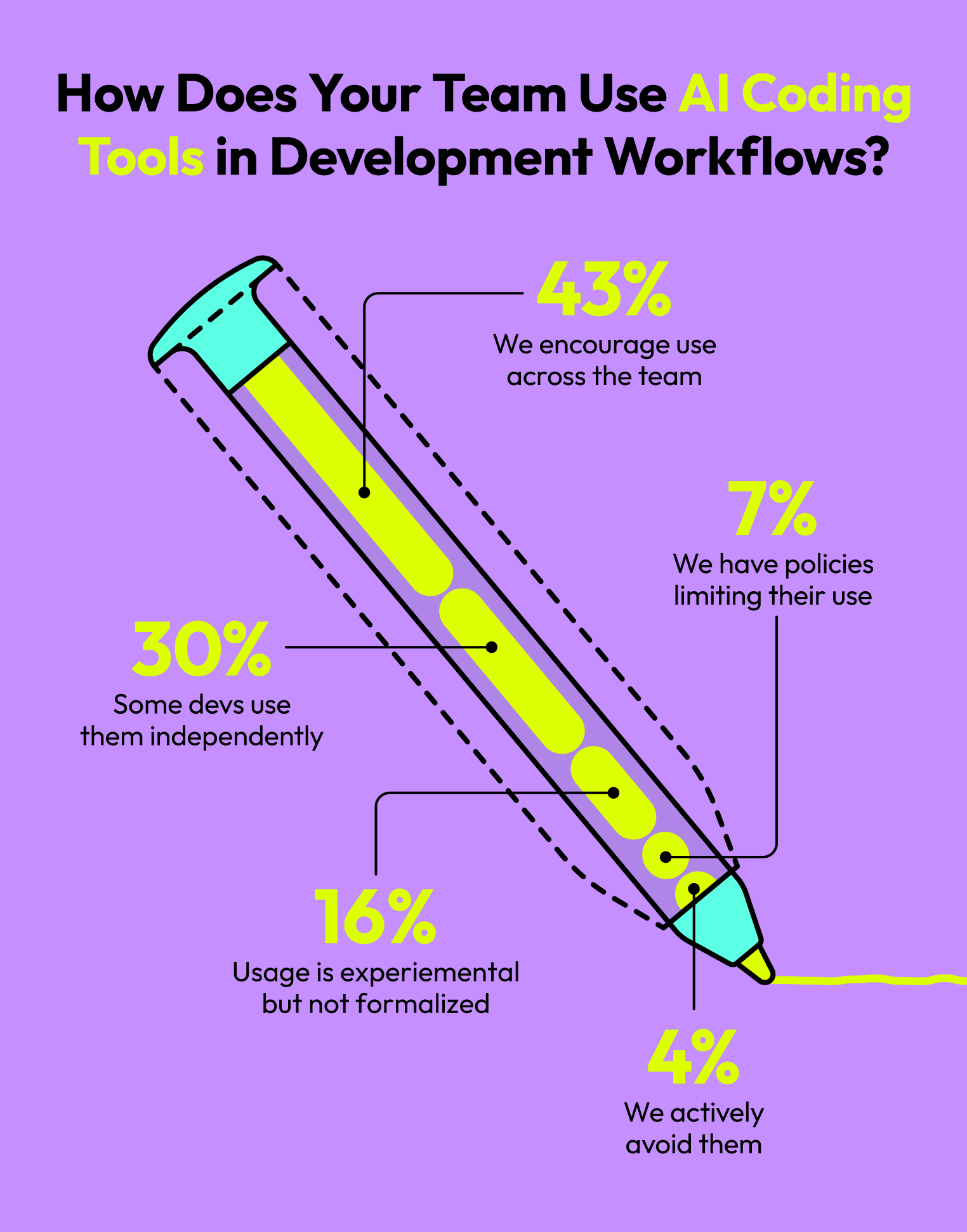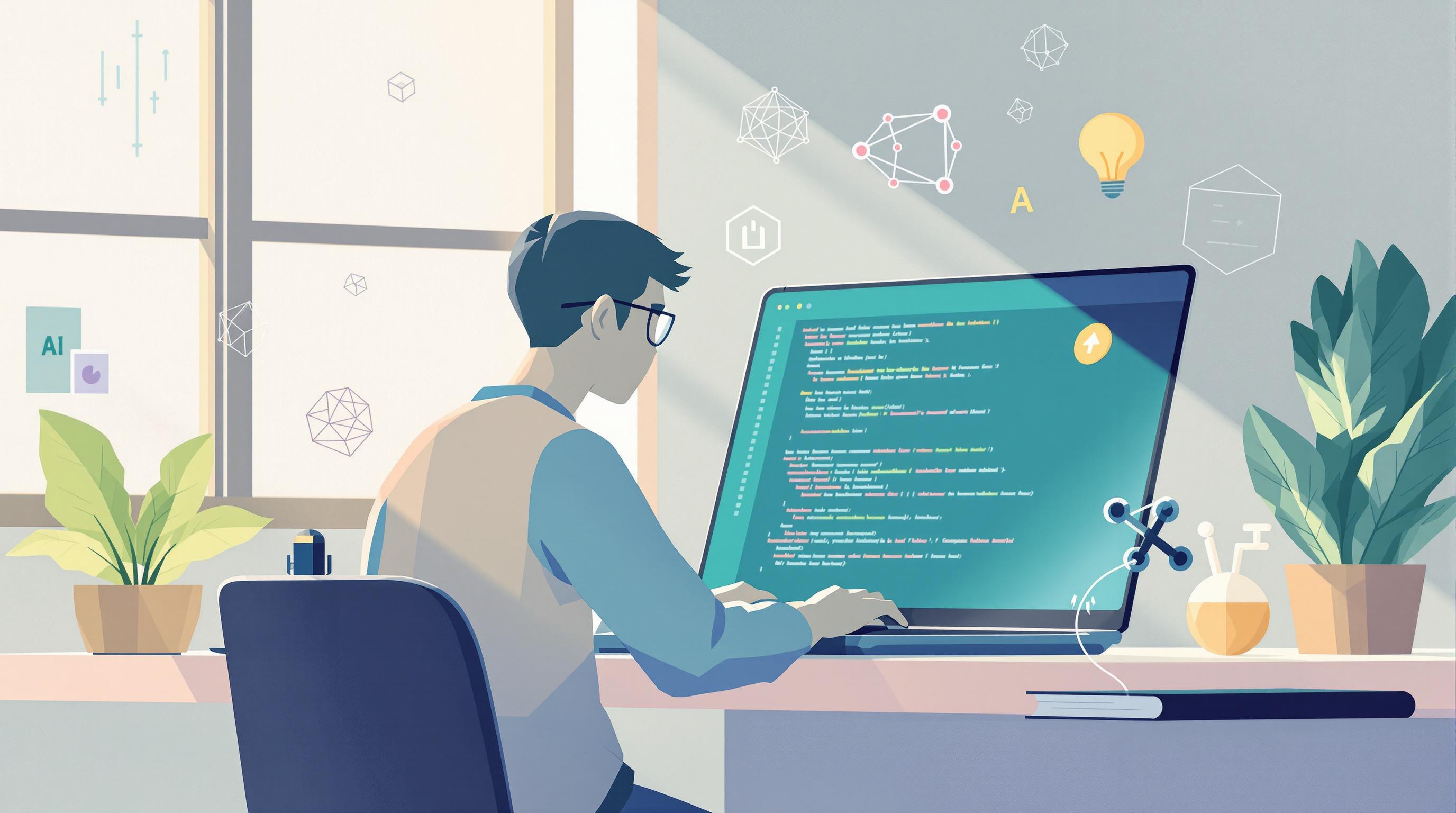In a world where AI is revolutionizing industries, a pressing question arises: Will AI replace Backend Developers? As we navigate this tech-driven landscape, it's crucial to understand the current capabilities of AI and how they intersect with the unique skills of backend developers.
This post will explore the tasks AI can handle, the areas where human creativity shines, and what this means for the future of backend development. Expect insights on job market trends, skills that remain in demand, and practical ways developers can adapt to thrive alongside AI.
Table of contents
The Backend Developer's Dilemma: To Be Replaced or Not?
Many backend developers are feeling both excited and apprehensive about AI's role in their work. Some view AI as a tool that can enhance their productivity by automating repetitive tasks, allowing them to focus on more complex problem-solving. According to a survey, 66% of developers express concern about AI replacing them, yet a significant number believe AI will augment their capabilities rather than fully take over their jobs.

Credits: Lemon.io
Optimists argue that AI's strengths lie in automating mundane tasks like debugging and code generation, enabling developers to take on more strategic roles. However, pessimists fear job displacement, especially in junior positions where routine tasks dominate. As noted by Fiverr’s CEO and echoed in various articles, developers are encouraged to adapt by honing skills in AI technologies while embracing the partnership between human creativity and AI efficiency.
What parts of Backend Developer jobs is AI replacing?
AI is stepping into the backend development realm by automating several repetitive tasks that developers typically handle. For instance, code generation is becoming more streamlined with Large Language Models (LLMs) that can create boilerplate and complex code based on predefined specifications, significantly reducing the time developers spend on initial coding phases. A recent study shows that LLMs can also assist in generating secure backends, suggesting a shift in how foundational code is produced.
Moreover, testing automation is another area where AI is making inroads. AI tools can generate test cases and execute regression tests, ensuring code reliability with minimal human oversight, as highlighted in a survey on AI techniques in microservices. This not only speeds up the development process but also enhances the overall quality of the application. While the human touch remains essential for oversight and refinement, AI is already reshaping the landscape for backend developers.
What parts of Backend Developer jobs AI cannot replace
Backend developers play a vital role in software development, and several aspects of their jobs remain irreplaceable by AI. For instance, creativity and problem-solving are uniquely human traits; developers often face unique challenges requiring innovative solutions that AI simply cannot provide. As highlighted by Nile Bits, human intuition is key in designing algorithms and optimizing performance.

Credits: Image via Nile Bits
Moreover, effective communication and collaboration are crucial in the software development process. Developers need to work closely with stakeholders and team members, gathering and sharing insights that AI struggles to convey. According to Gartner, these interpersonal skills are essential for understanding project requirements and addressing user needs, showcasing how AI cannot replicate the nuances of human interaction.
How Backend Developers Can Adapt in the AI Era
As AI technologies continue to evolve, the role of backend developers is set to transform significantly. With AI's ability to automate tasks like generating boilerplate code and writing basic unit tests, developers can now focus more on strategic thinking and complex problem-solving. According to Gabrielle Eduarda, AI can handle routine tasks, allowing developers to engage in domain modeling and architecture decisions, areas where human insight is invaluable.
To stay relevant, backend developers need to broaden their skill sets. Learning AI concepts and machine learning techniques is essential, as highlighted by Zahiruddin Tavargere. Understanding cloud services and serverless architectures can aid in deploying AI models efficiently. Moreover, collaborating with AI engineers and enhancing data management skills will be crucial for backend developers to leverage AI effectively in their workflows.
Current job market for Backend Developers in the US
The job market for backend developers in the United States is currently vibrant, featuring over 8,000 job listings as of now. These positions vary across experience levels, with notable opportunities in major cities like New York and San Francisco, and a significant number of roles available remotely (source). As businesses increasingly adopt digital solutions, the demand for skilled backend developers continues to rise, driven by the need for scalable and secure infrastructures.
According to recent trends, there has been a 12% annual increase in demand for backend developers, with job postings growing by 18% annually since 2020 (source). Employers are particularly seeking candidates proficient in cloud technologies like AWS and Azure, as well as those familiar with microservices and API design. The competitive landscape also emphasizes the importance of soft skills, as companies look for developers who can effectively communicate their technical solutions to broader business challenges.
Is Backend Developer AI safe?
The role of a backend developer is not entirely at risk of being replaced by AI. While AI technologies such as ChatGPT and GitHub Copilot can automate repetitive coding tasks, they lack the creativity and complex problem-solving skills that human developers possess. This means that, although AI can assist in enhancing productivity, backend developers remain essential for designing architectures and making critical decisions.

Credits: Framer
Moreover, AI's limitations in context understanding and long-term planning reinforce the need for human expertise. Consequently, instead of a replacement, AI serves as a powerful tool that complements the skills of backend developers, allowing them to focus on more creative and high-level tasks. This collaborative approach suggests that backend developers who adapt to AI technologies will continue to be relevant in the job market.
Hiring Backend Developers? Here's what to look for
In today's digital era, hiring a backend developer requires keen insight into desired skills and effective screening processes. Look for candidates proficient in programming languages like Python, Java, or Node.js, and those with experience in database management using SQL or NoSQL. Familiarity with cloud platforms such as AWS and understanding of API development are also key skills to seek.

Credits: MoldStud
To ensure you select the right candidate, consider leveraging tools like Adaface's Backend Developer assessment that assesses technical skills comprehensively. The Prompt Engineering Test and Generative AI Test are valuable for evaluating candidates' adaptability to new AI-driven tools and methodologies, ensuring they're equipped for future technological advancements.
Prompt Engineering Test
Generative AI Test
Backend Engineer Assessment Test
AI: Your New Best Buddy in Backend Development
Embracing AI as a collaborative partner unlocks a world of opportunities for backend developers. Imagine having a tireless assistant that handles repetitive tasks, allowing you to focus on creative problem-solving and innovative design. With tools like GitHub Copilot and AI-powered automation, developers can boost productivity and tackle more complex projects, turning mundane coding into an exhilarating adventure. As highlighted in MIT research, this shift not only enhances workflows but also leads to an exciting evolution in the developer role.
For those hiring backend talent, the future is equally bright. Companies can benefit from a new breed of developers who are adept at harnessing AI to create efficient workflows and bespoke solutions. Instead of fearing job loss, developers and employers alike should embrace this transformation, as it creates a demand for skills in AI collaboration and strategic thinking. The modern backend developer is set to become an AI-savvy innovator, ready to build systems that are smarter, more scalable, and more aligned with business goals.

40 min skill tests.
No trick questions.
Accurate shortlisting.
We make it easy for you to find the best candidates in your pipeline with a 40 min skills test.
Try for freeRelated posts



